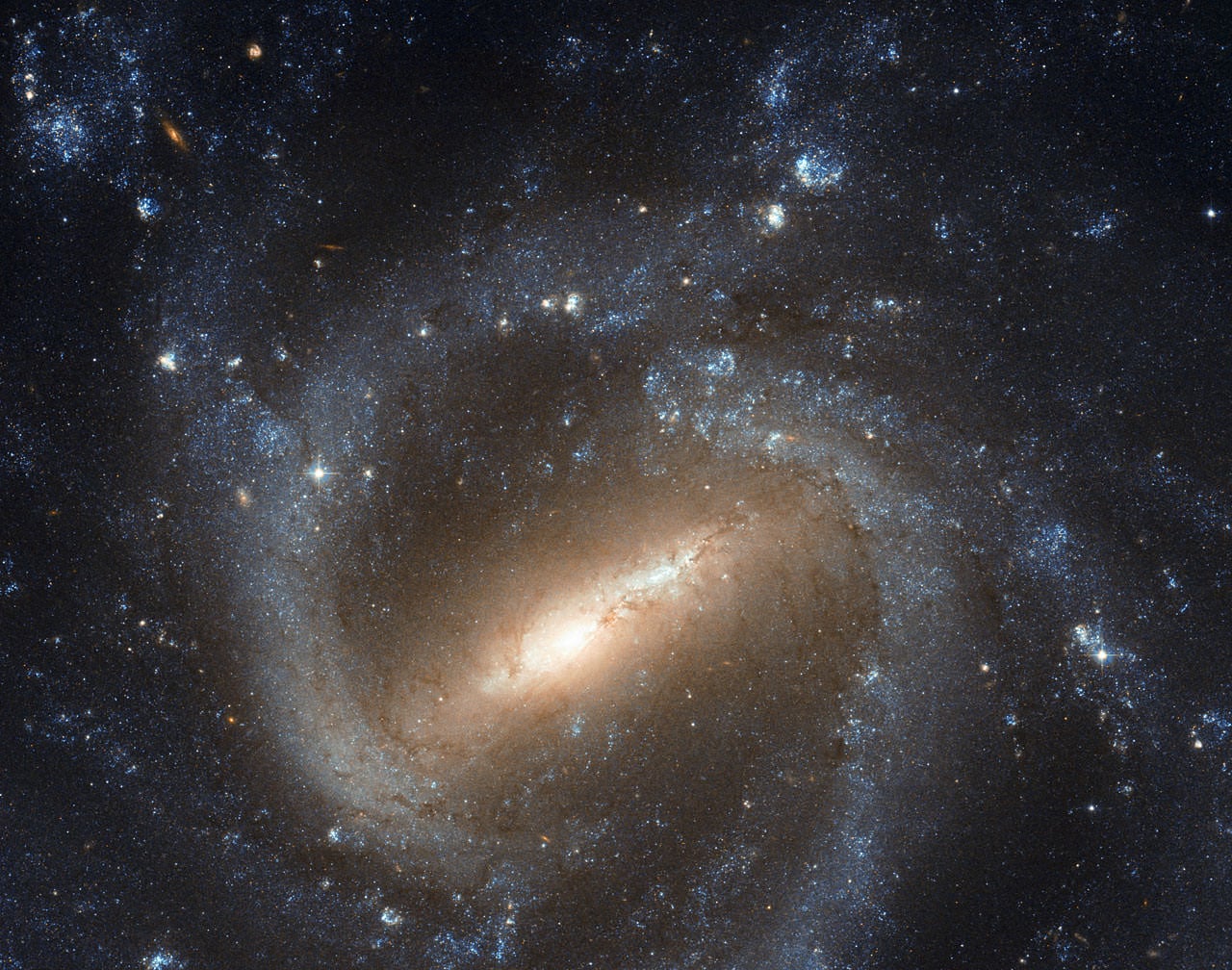[/caption]
Is this what we look like? Astronomers don't know for sure exactly what the Milky Way looks like, but searching out other barred spiral galaxies like this one is helping scientists to learn more about our home. Galaxy NGC 1073 is located in the constellation of Cetus (The Sea Monster).Most of the known spiral galaxies have a bar structure in their center, and this new image offer a stunning, if not clear view of one of these types of galaxies.
One piece of information that might be available from a central bar is the galaxy's age. Some astronomers have suggested that the formation of a this structure might signal a spiral galaxy's passage from intense star-formation into adulthood. Two-thirds of nearby, younger galaxies have the bar, while only a fifth of older, more distant spirals have one.
While Hubble's image of NGC 1073 is in some respects an archetypal portrait of a barred spiral, the Hubble team have pointed out a couple of quirks.
One, ironically, is almost — but not quite — invisible to optical telescopes like Hubble. In the upper left part of the image, a rough ring-like structure of recent star formation hides a bright source of X-rays. Called IXO 5, this X-ray source is likely to be a binary system featuring a black hole and a star orbiting each other. Comparing X-ray observations from the Chandra spacecraft with this Hubble image, astronomers have narrowed the position of IXO 5 down to one of two faint stars visible here. However, X-ray observations with current instruments are not precise enough to conclusively determine which of the two it is.
Hubble's image does not only tell us about a galaxy in our own cosmic neighborhood, however. We can also discern glimpses of objects much further away, whose light tells us about earlier eras in cosmic history.
Right across Hubble's field of view, more distant galaxies are peering through NGC 1073, with several reddish examples appearing clearly in the top left part of the frame.
More intriguing still, three of the bright points of light in this image are neither foreground stars from the Milky Way, nor even distant stars in NGC 1073. In fact they are not stars at all. They are quasars, incredibly bright sources of light caused by matter heating up and falling into supermassive black holes in galaxies literally billions of light-years from us. The chance alignment through NGC 1073, and their incredible brightness, might make them look like they are part of the galaxy, but they are in fact some of the most distant objects observable in the Universe.
Source:
ESA Hubble
 Universe Today
Universe Today
